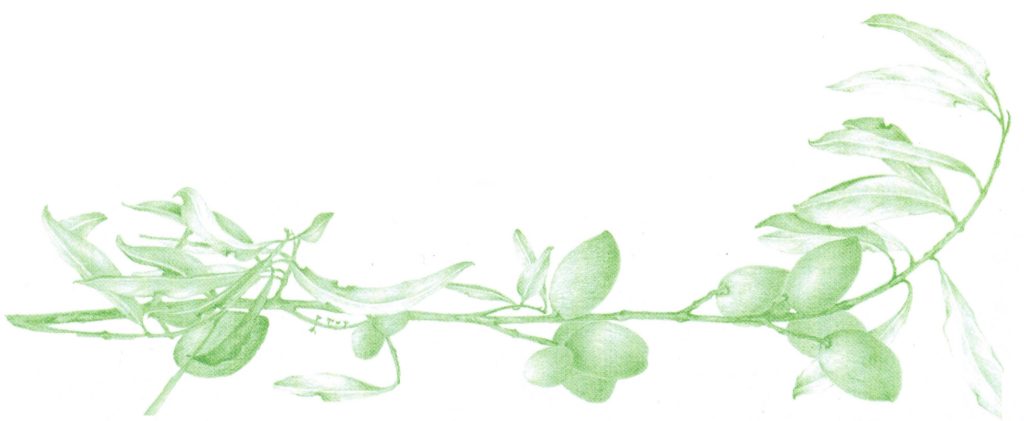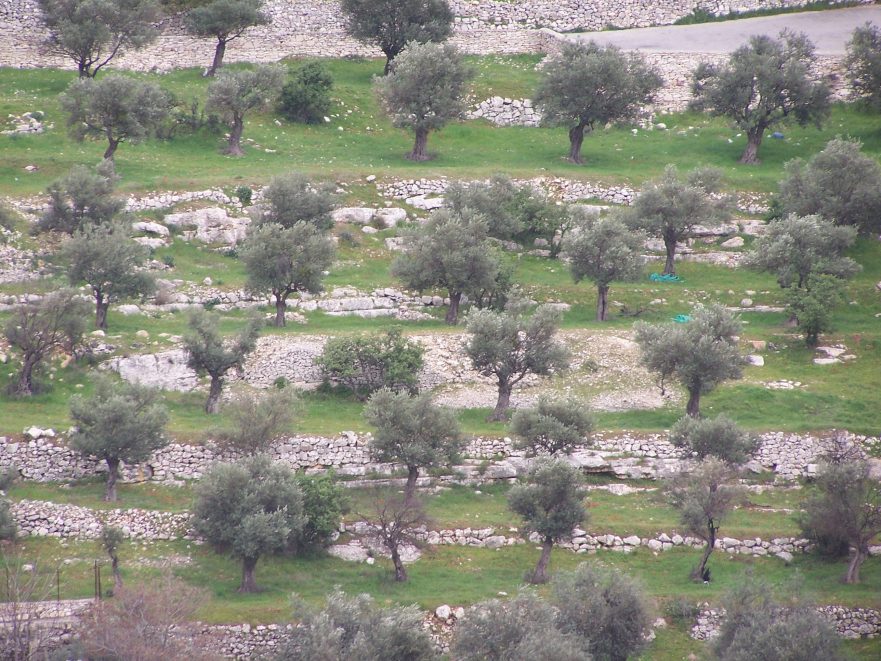Introduction
Material from Ezekiel 17:24, and more often 21:3 (20:47 in the English Bible) has often been cited as the source of Jesus’ saying in Luke 23:31, “If they do this when the wood is green, what will happen when it is dry?“ Other commentators have questioned this assumption. If the material was borrowed from Ezekiel, however, was it borrowed directly or was it sifted through hundreds of years of usage, only to find its way into the mouth of Jesus?When addressing these questions, it becomes immediately apparent that despite the numerous interpretations offered, there has been no attempt to gather all the pertinent sources together. Nor has there been any attempt to offer anything resembling a comprehensive analysis of all the relevant material. Therefore, the purpose of this study is to amass all known possible parallels, and to discuss the impact of each on the understanding of the “green tree/dry tree” imagery from Ezekiel to Luke.
Premium Members and Friends of JP must be signed in to view this content.
If you are not a Premium Member or Friend, please consider registering. Prices start at $5/month if paid annually, with other options for monthly and quarterly and more: Sign Up For Premium

- [1] Avraham Even-Shoshan, Konkordantsiah Hadashah LaTanach (Jerusalem: Kiryat-Sefer, 1982), 595; Francis Brown, S. R. Driver, and Charles Briggs, The New Brown-Driver-Briggs-Gesenius Hebrew and English Lexicon (Lafayette, Indiana: Associated, 1980), 535, hereafter referred to as B/D/B. ↩
- [2] Ibid. ↩
- [3] This is the consensus interpretation. E.g.: W. Zimmerli, Ezekiel (Philadelphia: Fortress, 1979), 359-68; Timothy Polk, “Paradigms, Parables, and Mesalim: on Reading the Masal in Scripture,” Catholic Bible Quarterly 45 (1983): 580. ↩
- [4] So Zimmerli, 368 and Horacio Simian-Yofre, “Ezekiel 17,1-10 como enigma y parabolo,” Biblica 65 (1984): 39. Cf. also his extensive bibliography for this interpretation on the same page. ↩
- [5] E. Klostermann, Das Lucasevangelium (Tubingen: Mohr, 1929), 228. ↩
- [6] F. M.-J. Lagrange, Evangile Selon Saint Luc (Paris: J. Gabalda, 1948), 586; A. R. C. Leaney, A Commentary on the Gospel According to Saint Luke (London: Black, 1966), 283-4. ↩
- [7] The translation followed here is that of Geza Vermes, The Complete Dead Sea Scrolls in English (New York: Penguin, 2004), 267; cf. also Florentino Garcia Martinez and Eibert J. C. Tigchelaar, The Dead Sea Scrolls Study Edition (Grand Rapids: Eerdmans, 1997-1998), 1:166 for the Hebrew text and 167 for an alternate English translation. ↩
- [8] Dale C. Allison, Jr. “The Authorship of 1QS III, 13 to IV 14,” Revue de Qumran 38 (May, 1980): 267 builds on the work of J. Jeremias, based on the use of the word ’esh. ↩
- [9] Sven Holm-Nielsen, Hodayot: Psalms from Qumran (Denmark: Universitetsforlaget, 1960), 72 and M. Delcor, Les Hymnes de Qumran (Paris: Letouzey et Ane, 1962), 132; J. Carmignac, “Les citations de l’Ancien Testament, et specialement des Poemes du Serviteur, dans les Hymnes de Qumran,” Revue de Qumran 7 (1960): 370 lists 11:29-30 as an exact parallel and 16:18-19 as a partial parallel along with 15 other instances where the Hymns are parallel with Ezekiel. On pages 362-9 and 372-80, Carmignac unintentionally demonstrates that only Isaiah (99), Jeremiah (27), Psalms (116), and Proverbs (18) exceed Ezekiel in number of allusions in Hodayot. Cf. also Joze Krasovec, “Merism-Polar Expression in Biblical Hebrew,” Biblica 64 (1983): 236. ↩
- [10] Zimmerli, 368; Joze Krasovec, 236; Holm-Nielsen, 72; and Yaakov Licht, Megillat HaHodayot (Jerusalem: Bialik, 1957), 87. ↩
- [11] Delcor, 206. ↩
- [12] Cf. the review by M. Delcor of G. Morawe’s Aufbau und Abgrenzung der Loblieder von Qumran: Studien zur gattungsgeschichtlichen Einordnung der Hodajoth (Berlin: Evangelische Verlagsanstalt, 1961) in Revue de Qumran 15 (Oct, 1963): 444-5; J. Carmignac, “La Notion d'Eschatologie Dans La Bible et a Qumran,” Revue de Qumran 25 (1969): 23; “Le Document de Qumran sur Melkisedeq,” 27 (Dec. 1970): 370; the review of Luigi Moraldi’s I Manoscritti di Qumran (Unione Tipografico-Editrice Torinese) in Revue de Qumran 30 (March, 1973): 284-5; “Qu’est-ce que L’Apocalyptic? Son emploi a Qumran,” Revue de Qumran 37 (Sept. 1979): 25, quoting J. Schreiner in support, but giving no specific citation; Jonathan A. Draper, “A Targum of Isaiah in 1QS III, 2-3,” Revue de Qumran 11.2 (March, 1983): 269, note 28, which cites CD 1:1 and 2:2 as parallels; Emile Puech, “La racine SYT-S’T en arameen et en hebreu. A propos de Sfire 1 A 24, 1QHa III, 30 et 36 (=XI, 31 et 37) et Ezechiel,” Revue de Qumran 11 (December, 1983): 374. ↩
- [13] Cf. Holm-Nielsen, 148, note 3; 153, note 30; and 154-5, note 42 for this and other interpretations. ↩
- [14] The translation followed here is that of Vermes, 285. Cf. Martinez and Tigchelaar 1:180 for the Hebrew text and 181 for an alternate translation. ↩
- [15] For those interested in completeness or in Torah le-shmah (“the study of Torah for its own sake”), the pertinent references are m. Demai 2:3, 5; 6:9; Nedarim 7:1; Eduyot 5:4; Niddah 4:3; 7:1, 2; Bekhorot 6:3; Kelim 17:11; Menachot 9:5; Bava Batra 5:11; Peah 3:3; Sheviit 9:6; Shabbat 4:1; 7:4; Pesachim 2:6; Avodah Zarah 2:4; and Uktsin 1:2 (C. J. Kasovsky, Otsar Lashon HaMishnah[Jerusalem: Massada, 1958], 3:1066); t. Eduyot 2:8; Niddah 5:6; Bekorot 4:4; Kelim (Bava Metsia) 5:2; Machshirin 3:10, 11; Demai 6:8; Zevachim 9:11; Nedarim 4:3; Bava Batra 5:3; Menachot 10:7;Niddah 3:11; Pesachim 2:21 (incorrectly cited as 1:33 or 1:13 by Kasovsky); Sheviit 4:14; Mikvaot 6:9; and Uktsin 1:1 (C. J. Kasowski [sic], Otsar Lashon HaTosefta [Jerusalem: J.T.S., 1951], 4:315-6). ↩
- [16] Shmini 6:2, 7; Tsav 1:12; and Kedoshim 8:9 (C. J. Kasovsky, Otsar Lashon HaTanaim (Jerusalem: J.T.S., 1968), 3:1144-5). ↩
- [17] Quotations from the Talmud are taken from the translation of I. Epstein in The Babylonian Talmud (London: Soncino, 1935, 1938). In connection with this passage, cf. his comment in 8:160, note 3; cf. also the beautiful merisms in 1 Kgs. 5:13 [English 4:33] and Mal. 3:19 [English 4:1], both of which employ language from the plant world, but neither of which is cited in Epstein’s note. All these texts underscore the popularity of such language in the agriculturally oriented societies of Israel in the periods of the Hebrew Bible, Second Temple, and New Testament. ↩
- [18] It is almost certain that this Jakum of Zeroroth is the High Priest “Jakim/Jakeimos/Alkimos/Alcimus” of 1 Macc. 7:5-25; 9:54-57; 2 Macc. 14:3-26; Josephus Ant. 12:385, 387; and 20:235. He is so identified in Alexander Buchler, “Alcimus” in Jewish Encyclopedia, ed. Isadore Singer (New York: Ktav, 1901), 1:333; “Alcimus,” Universal Jewish Encyclopedia, ed. Isaac Landman (New York: Ktav, 1969), 1:166; Abraham Schalit, “Alcimus” in Encyclopaedia Judaica, first edition (Jerusalem: Keter, 1971), 1:549; second edition, eds. Fred Skolnik and Michael Berenbaum (Jerusalem: Keter, 2007), 1:603. ↩
- [19] I.e., the cross-bar of the cross. ↩
- [20] I.e., crucified. Cf. the same synonymy at work in Gal. 3:13. ↩
- [21] Here the translation is taken from Midrash Rabba: Genesis Rabba, translated by H. Freedman (New York: Soncino, 1983), 2:599-600. ↩
- [22] The Midrash on Psalms, translated by W. G. Braude (New Haven: Yale, 1959), 1:166-7. ↩
- [23] Isaac Broyde, “Jose ben Joezer of Zeredah” in Jewish Encyclopedia, 7:242. ↩
- [24] For the purposes of this study, it does not matter whether the oppressor was Alexander Jannaeus, as suggested by Gustaf Dalman, Jesus-Jeshua: Studies In the Gospels, translated by Paul P. Levertoff (New York: Macmillan, 1929), 190, who cites Ant. 13.14.2 and War 1.4.6 in support, or whether it was Bacchides, as suggested by Freedman (599) who cites 1 Macc. 7:16 as evidence. ↩
- [25] B. Semachot 8. Cf. Dalman, 193 for the translation. ↩
- [26] The translation is here taken from Tanna deBe Eliyyahu, translated by W. G. Braude and I. J. Kapstein (Philadelphia: J.P.S., 1981), 187. ↩
- [27] Original translation from the text of M. Ish-Shalom, Seder Eliyahu Rabba VeSeder Eliyahu Zuta (Jerusalem: Vahrman, 1969), 65, note 50. ↩
- [28] Jerome H. Neyrey, “Jesus’ Address to the Women of Jerusalem—A Prophetic Judgment Oracle,” New Testament Studies 29 (January, 1983): 74. ↩
- [29] Ibid., 78. ↩
- [30] Ibid., 78-9; J. A. Fitzmyer, The Gospel According to Luke (Garden City: Doubleday, 1985), 1496, 1498; A. Plummer, A Critical and Exegetical Commentary on the Gospel According to St. Luke(I.C.C.; Edinburgh: T. and T. Clark, 1922), 529-30; F. W. Danker, Jesus and the New Age (St. Louis: Clayton, 1972), 237; E. J. Tinsley, The Gospel According to Luke (Cambridge: University, 1965), 201; and Leaney, 283-4. ↩
- [31] Neyrey, 74. ↩
- [32] Leaney, 283-4; Lagrange, 586. ↩
- [33] Cf. Neyrey, 74, 77, and 84, notes 7 and 8 for a brief survey. ↩
- [34] J. Reiling and J. L. Swellengrebel, A Translator’s Handbook on the Gospel of Luke (Leiden: Brill, 1971), 729. ↩
- [35] Neyrey, 79; Fitzmyer, 1498. ↩
- [36] Neyrey, 78. ↩
- [37] R. Bultmann, History of the Synoptic Tradition (New York: Harper and Row, 1963), 37, 115-6; M. Black, An Aramaic Approach to the Gospels and Acts (Oxford: Clarendon, 1967), 126-7; and S. G. F. Brandon, The Fall of Jerusalem and the Christian Church (London: S.P.C.K., 1957), 207, note 4. ↩
- [38] Reiling and Swellengrebel, 729. ↩
- [39] Mark G. Schneider, Das Evangelium nach Lukas (Gutersloh/Wurzburg: Mohn/Echter, 1977), 2:436. ↩
- [40] E.g., Plummer, 529. ↩
- [41] E.g., Fitzmyer, 1498; Neyrey, 74. ↩
- [42] E.g., Brandon, 102-3, 198-9, 207; Tinsley, 201. ↩
- [43] Leaney, 283-4. ↩
- [44] Fitzmyer, 1498. ↩
- [45] Danker, 237; cf. also Plummer, 529-30. ↩



